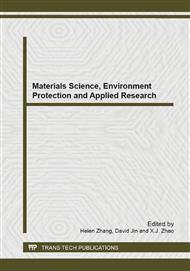p.199
p.203
p.207
p.211
p.215
p.220
p.224
p.228
p.235
Solid-Phase Synthesis of Pyrrole-Imidazole Polyamides by Resin
Abstract:
Over the past years, synthesis of pyrrole-imidazole (Py-Im) polyamides has been achieved by solution-phase and solid-phase methods. Comparing with solution-phase synthesis, the solid-phase synthesis has showed great superiority in various aspects. The solid-phase synthesis is a rapid, effective, energy-saving and environment-friendly method, which has been widely used in the synthesis of pyrrole-imidazole polyamides. Many complicated polyamides can be obtained quickly and effectively through this method. By far, the application of the solid-phase synthesis for Py-Im polyamides has made rapid development. Resin as the main carrier, a key substance in solid phase synthesis, consists of two parts: polymer (macromolecular resin) and linking chain (linker). To date, there are many kinds of resins applied in the solid phase synthesis, such as PAM resin, Wang resin, Oxime resin and Clear resin, and so on. In this article, we will focus on the elaboration about the basic principle and application of the four kinds of resins mentioned above in solid-phase synthesis of polyamides. This provides an important reference for development of polyamides.
Info:
Periodical:
Pages:
215-219
Citation:
Online since:
March 2014
Authors:
Keywords:
Price:
Сopyright:
© 2014 Trans Tech Publications Ltd. All Rights Reserved
Share:
Citation:


